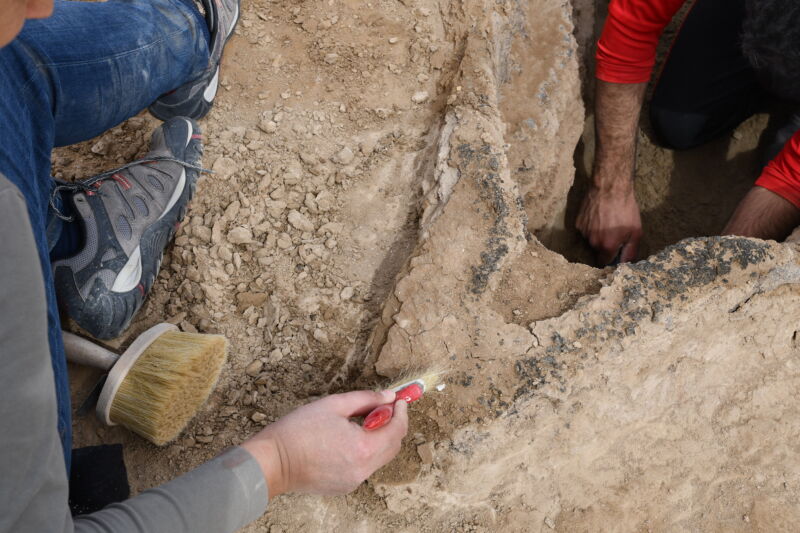
Enlarge (credit: German Archaeological Institute)
All that’s left of the ancient boat today is the bitumen, a black tar that once coated its framework of reeds, palm leaves, or wood. That fragile organic material is long gone, leaving behind only ghostly imprints in the bitumen. But there’s enough left for archaeologists to tell that in its heyday, the boat would have been a relatively slender craft—7 meters long and about 1.5 meters wide—well-suited to navigating the rivers and canals of ancient Sumer.
Archaeologists found the boat in an area that, 4,000 years ago, would have been the bustling hinterlands of the largest city in the world: Uruk. Founded in 5000 BCE from the merger of two smaller settlements on the bank of the Euphrates River, Uruk was one of the world’s first major cities and possibly even the birthplace of the world’s first writing (the oldest known writing samples in the world are tablets from Uruk). The Sumerian King List claims the legendary hero-king, Gilgamesh, ruled from his seat at Uruk in the 2600s BCE, which is not long before the recently excavated boat was built, sailed, and sank.
At its height around 3000 BCE, Uruk boasted 40,000 residents in the city itself, with a total population of about 80,000 or 90,000 people in the surrounding hinterlands. The area outside the city boasted smaller communities, farms, ancient manufacturing workshops, and networks of canals. Uruk was beginning its long, slow decline by 2000 BCE, around the time our boat was built.





